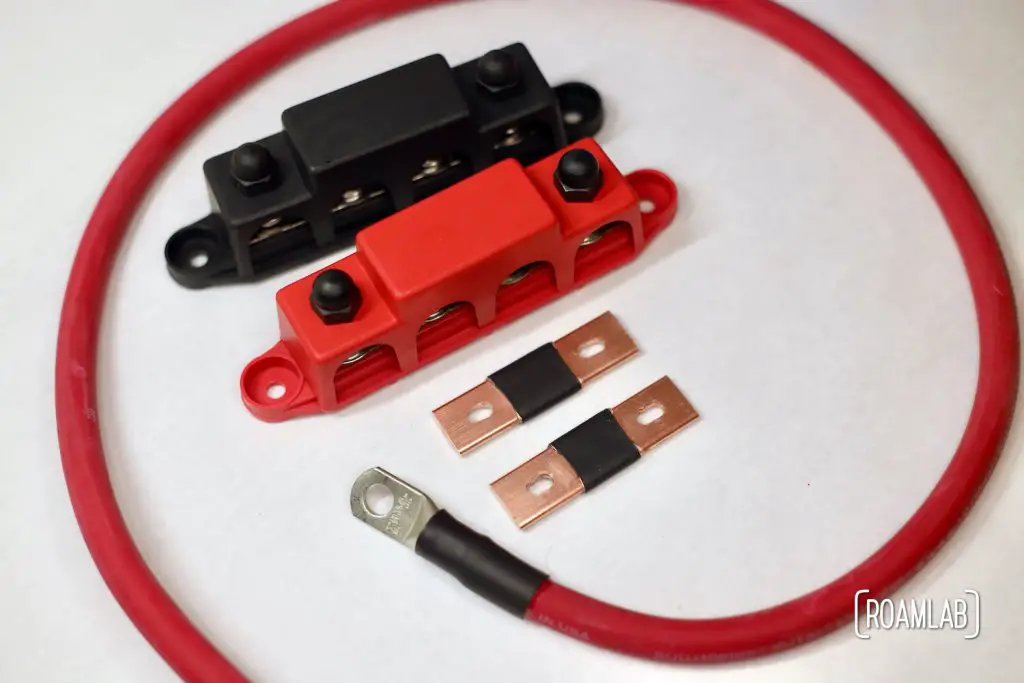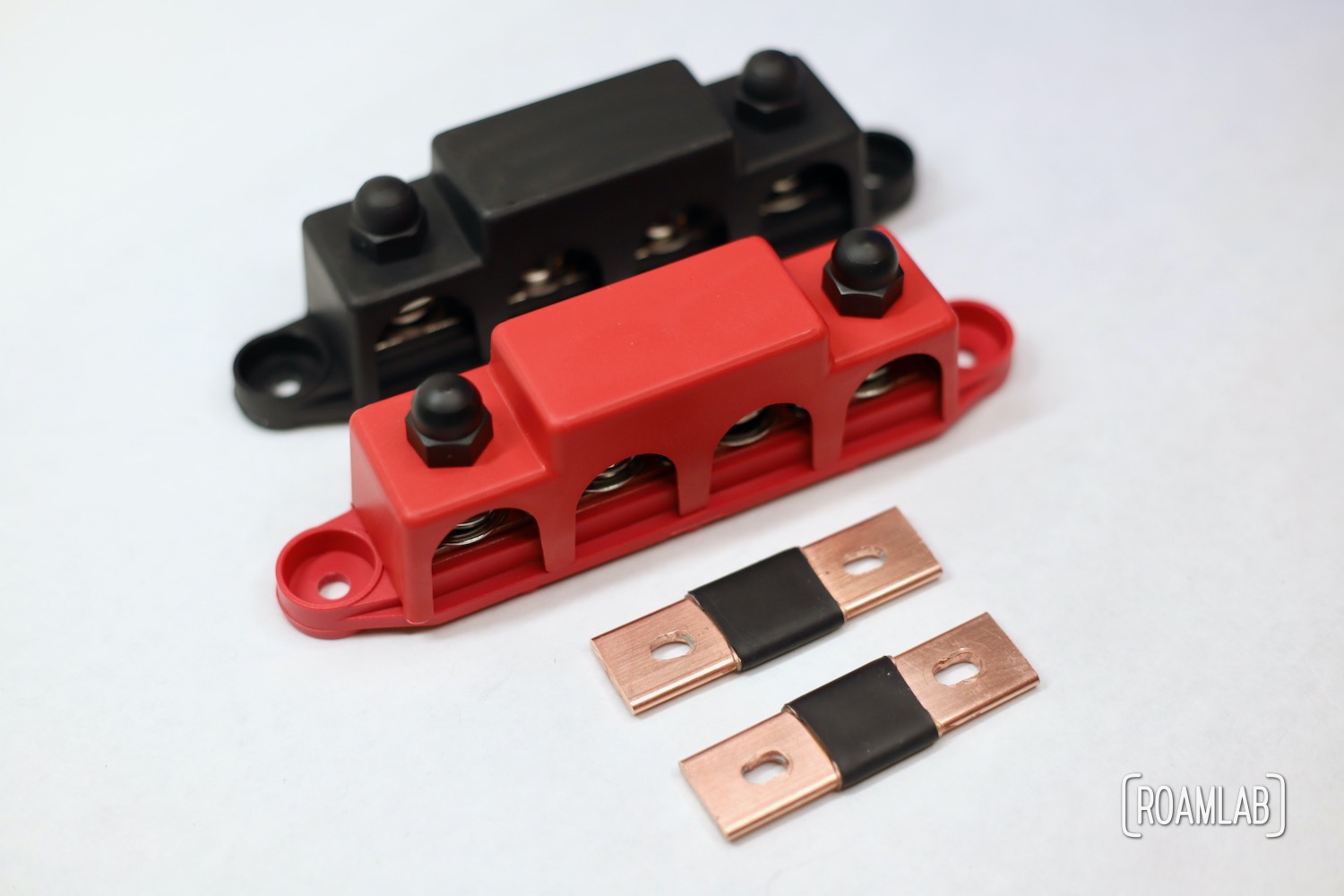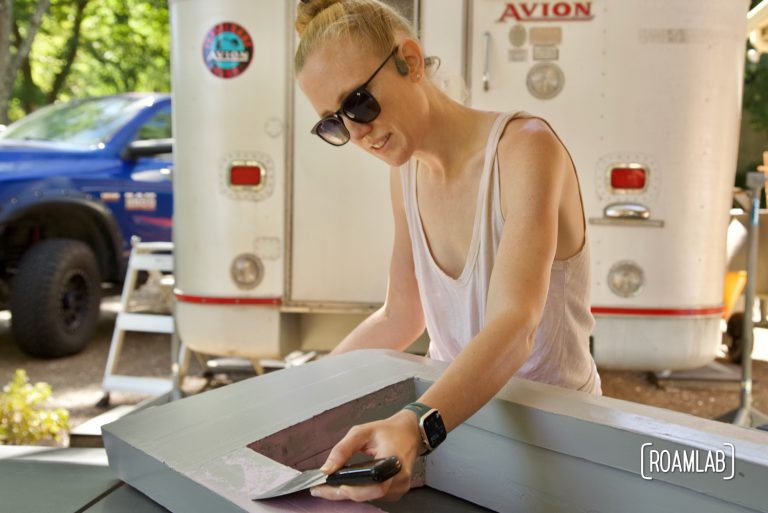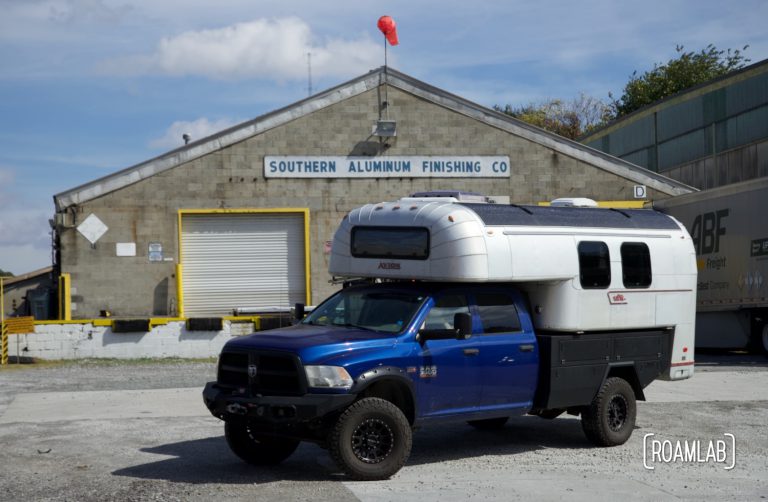Back in 2017, we picked up our 1970 Avion truck camper. While the exterior was in impressively good shape for a half-century-old camper, the interior was a victim of Florida’s rot and vermin after decades of exposure. This camper launched us on our biggest project to date. And while the restoration of this beauty has been years in the making, we are finally tackling the electrical system. Not only are we sourcing and assembling the system ourselves, but we are building our batteries. As part of our DIY lithium battery series, we are investigating a straightforward but critical component: the bus bar.
An electrical system is only as strong as its weakest link. High current connections require thick gauge wires that won’t restrict the flow of energy. The first links in that chain are the connections between cells that make up our battery. There are two common ways to connect battery cells: very thick wires or bus bars. Our battery cells came with bus bars, but the flimsy sheet metal isn’t appropriate for our purposes. So we are building our bus bars.
What Are Bus Bars
A bus bar (also known as busbar) is a strip or bar of conductive metal used for short-distance high current power distribution. Bus bars efficiently handle high electrical current, dissipate heat, and allow multiple connections on a single bar. These bars can take many different forms for a variety of applications. Still, we mostly come in contact with them as modular electrical hubs and/or alternatives to wire connections when transporting a high current over a short distance.
As an important side note: while a bar can be quite strong, they should not double as structural parts of a circuit. If two items connected by a bus bar need to be physically bound to each other, that should be a separate material so that you don’t compromise electrical connection with additional strain. This consideration is very relevant to our series of battery cells that will have to be firmly bound together for safe travel in the future. That will be a challenge we tackle while building the battery box.
What We Are Building
We have applications for both types of bus bars, but the kind we are building ourselves is a simple two-point connector for a high amperage battery connection. We have 16 battery cells to join in series. That means short high current jumps between terminals. While there are wires that can achieve the connectivity that we need for these two battery terminals, the process and equipment are far more time consuming and expensive than the relatively simple bus bars. So, we are making bus bars. While this is a straightforward design (two holes in a bar of metal), we have two important decisions to make before we start building: what materials will we use and what dimensions will the bars be?

This post is the beginning of a series about bus bars as we investigate the materials, dimensions, and processes to make our bus bars. The right bus bars make a world of difference, and they are surprisingly easy to assemble when you know what you are doing!





